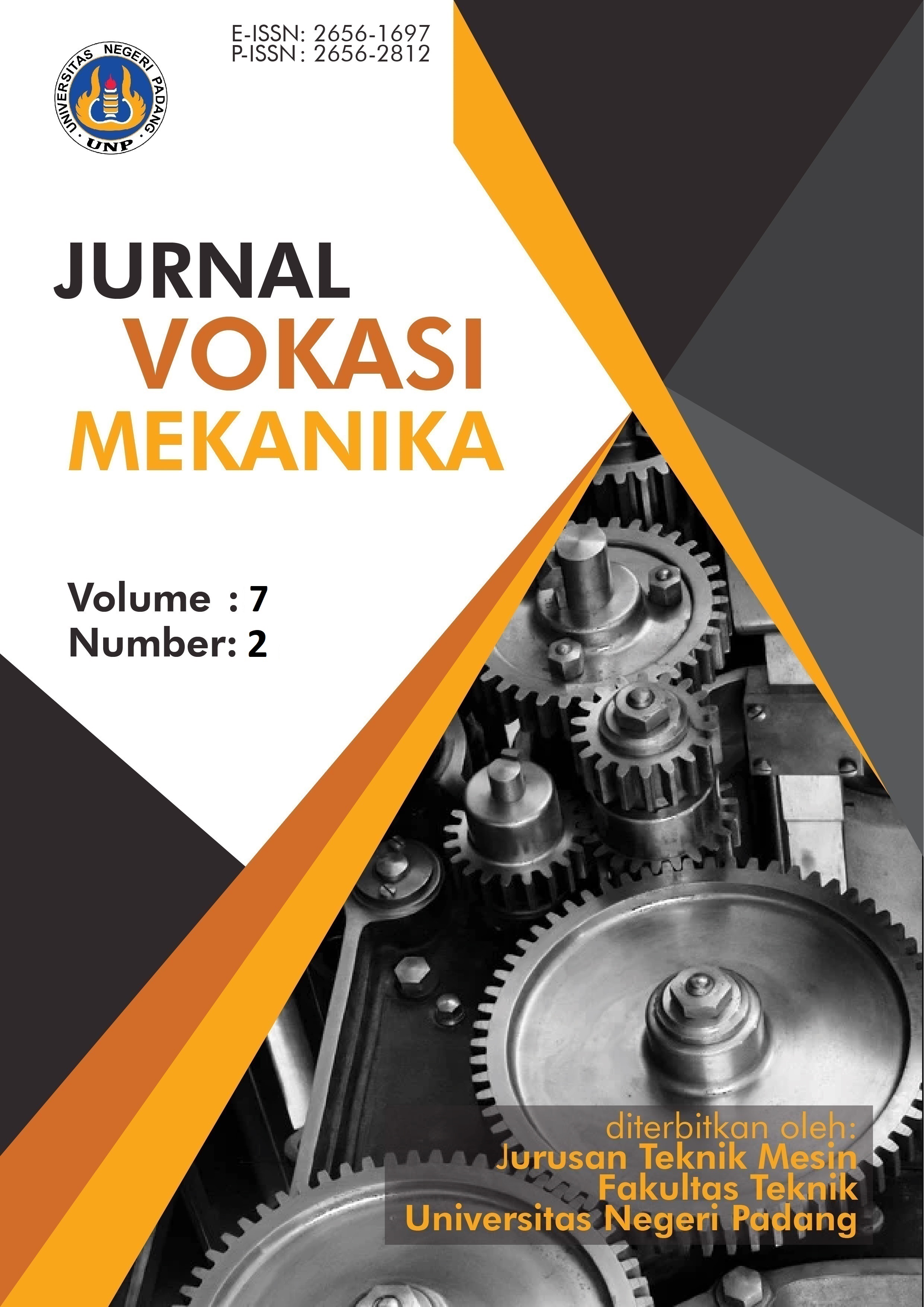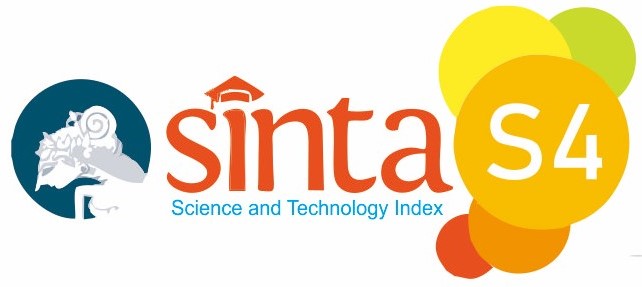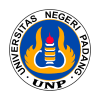Analysis Of Physical And Mechanical Properties Of Recycled Aluminum With Variations In Molding Temperatures And Adding Degasser Powder As An Environmentally Friendly Material
Abstract
Recycling is the process of converting used materials into new materials with the aim of preventing waste that can actually be useful, reducing the use of new raw materials, reducing energy use, reducing pollution, land damage. The purpose of this study was to determine the most optimal pouring temperature to produce the best casting of the physical and mechanical properties of recycled aluminum material added with degasser powder. The urgency of this study is as a research material in the field of materials. This research method is to make 3 variations of melting temperature before pouring into the mold, the temperature variations used are 6750-7000C, 7000-7250C and 7250-7500C. At any temperature variation before pouring into the mold, degasser powder is also added to help clean the molten metal from the gases trapped in the molten metal. After the sample is molded, the results are visually observed, then a specimen is made to test the mechanical properties of the used aluminum casting. The data from the test results show that there is a fairly large porosity value in each variation. The hardness value of the test results shows that it is directly proportional to the temperature variation. At a temperature of 7250-7500C the average hardness value is 98.5 HVN. While the tensile strength at a temperature of 7250-7500C value is 83.58 Mpa, at a temperature of 7000-7250C = 74.39 Mpa and at a temperature of 6750-7000C = 71.5 Mpa. Thus the most optimal temperature in this used aluminum casting is 7250-7500C.
References
Abadi, Z., Kurniawan, A., Arafat, A., Abdillah, N. I., & Senthot, D. R. (2021). Analysis of riser variations in recycled aluminum sand casting on hardness values. INVOTEK: Jurnal Inovasi Vokasional Dan Teknologi, 21(3), 213–220. https://doi.org/10.24036/invotek.v21i3.940
Bharti, C., Singh, A., Rahul, R., Sharma, D., & Dwivedi, S. P. (2021). A critical review of aluminium based composite developed by various casting technique with different reinforcement particles to enhance tribo-mechanical behaviour. Materials Today: Proceedings, 47, 4092–4097. https://doi.org/10.1016/j.matpr.2021.06.366
Chandrasekaran, R., Campilho, R. D. S. G., & Silva, F. J. G. (2019). Reduction of scrap percentage of cast parts by optimizing the process parameters. Procedia Manufacturing, 38, 1050–1057. https://doi.org/10.1016/j.promfg.2020.01.191
Djafar Shieddique, A., Maulidiawati, D., Iqbal, M., Muttahar, Z., Suriaman, I., Mesin, J. T., Tinggi, S., & Wastukancana, T. (n.d.). Pengaruh curing time dan pemanasan cetakan pasir kering terhadap kadar air, kuat tekan, dan lost of ignition (LOI) untuk aplikasi sand casting .
Gottmyers Melwyn, J., Chandragandhi, B., Sathiyaseelan, G., & Srinath, P. (2023). Aluminium scrap recycling in a production furnace: Minimizing dross formation for sustainable and efficient recovery. Materials Today: Proceedings. https://doi.org/10.1016/j.matpr.2023.05.340
Hidayanto, B., Wardoyo dan Muhammad Wahyu Darojad, A., & Diterima, N. (2018). PENGARUH VARIASI TEMPERATUR TUANG PADA PENGECORAN DAUR ULANG Al-Si TERHADAP STRUKTUR MIKRO DAN KEKERASAN DENGAN POLA LOST FOAM INFORMASI ARTIKEL ABSTRAK: Vol. IV (Issue 1). http://jurnal.untirta.ac.id/index.php/jwl
Li, Y., Liu, J., Huang, W., & Zhang, S. (2022). Microstructure related analysis of tensile and fatigue properties for sand casting aluminum alloy cylinder head. Engineering Failure Analysis, 136. https://doi.org/10.1016/j.engfailanal.2022.106210
Luo, A. A., Sachdev, A. K., & Apelian, D. (2022). Alloy development and process innovations for light metals casting. In Journal of Materials Processing Technology (Vol. 306). Elsevier Ltd. https://doi.org/10.1016/j.jmatprotec.2022.117606
Mae, H., Teng, X., Bai, Y., & Wierzbicki, T. (2008). Comparison of ductile fracture properties of aluminum castings: Sand mold vs. metal mold. International Journal of Solids and Structures, 45(5), 1430–1444. https://doi.org/10.1016/j.ijsolstr.2007.10.016
Metode Hardness Test. (n.d.). https://www.detech.co.id/hardness-test/
Putra, D. A., Siswanto, S., & Puspitasari, P. (2021). Pengaruh Variasi Bahan Pengikat Terhadap Kekuatan Cetakan Pasir, Permeabilitas, Fluiditas, Kekerasan Logam dan Kualitas Hasil Pengecoran Logam Paduan Al-Si Dengan Metode Gravity Casting. NOZEL Jurnal Pendidikan Teknik Mesin, 3(2), 150. https://doi.org/10.20961/nozel.v3i2.52098
Raza, M. H., Wasim, A., Sajid, M., & Hussain, S. (2021). Investigating the effects of gating design on mechanical properties of aluminum alloy in sand casting process. Journal of King Saud University - Engineering Sciences, 33(3), 201–212. https://doi.org/10.1016/j.jksues.2020.03.004
Siswanto, R., & Studi Teknik Mesin, P. (n.d.). PENGARUH TEMPERATUR TUANG TERHADAP POROSITAS, STUKTUR MIKRO DAN KEKERASAN DARI ALUMUNIUM RONGSOK BALING-BALING KAPAL MENGGUNAKAN PENGECORAN EVAPORATIF. 4, 2022. https://ppjp.ulm.ac.id/journals/index.php/rot
Suprihanto, A., & Umardani dan Wahyudi, Y. P. (n.d.). ANALISIS CACAT COR PADA PROSES PENGECORAN BURNER KOMPOR (STUDI KASUS DI PT. SUYUTI SIDO MAJU, CEPER). http://ejournal.undip.ac.id/index.php/rotasi-27-
Zhou, B., Liu, B., Zhang, S., Lin, R., Jiang, Y., & Lan, X. (2021). Microstructure evolution of recycled 7075 aluminum alloy and its mechanical and corrosion properties. Journal of Alloys and Compounds, 879. https://doi.org/10.1016/j.jallcom.2021.160407
Submitted
Copyright (c) 2025 Jurnal Vokasi Mekanika

This work is licensed under a Creative Commons Attribution 4.0 International License.








.svg_.png)


